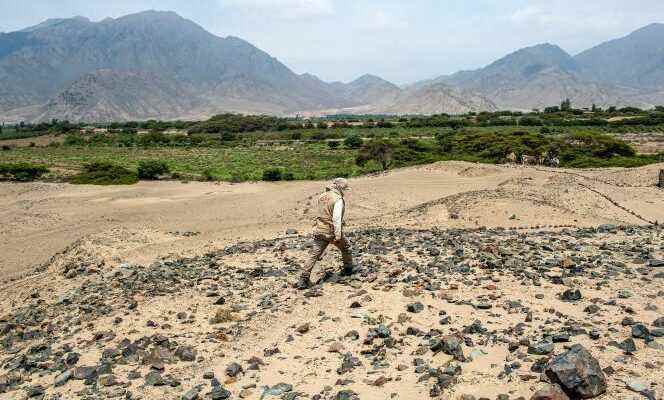LETTER FROM CUZCO
It is an archaeological site still largely unknown, and yet it has something to fascinate. Pyramids that stand in the desert… This obviously recalls its cousins from another continent further east, the pyramids of Egypt, which were built five hundred years later, around 2,650 BC. J.-C.
The civilization of Caral, 180 kilometers north of Lima, the Peruvian capital, takes root on the borders of the desert coast where the fertile valley of Supe unfolds, bathed by the river of the same name, which runs 85 kilometers to the Pacific. . It would have been born five thousand years ago, in – approximately 3000 BC, and would be one of the oldest civilizations in the world – and the oldest in the Americas.
Still little known, Caral was a surprisingly developed civilization: in architecture, with its elaborate and anti-seismic constructions, in engineering, with its buildings capable of capturing the energy of the wind “and to create a permanent fire”, explains Ruth Shady Solis, anthropologist and archaeologist in charge of the site, “ while in Europe, this technology was discovered at the end of the XVIIIe century “, or in agriculture, a sector in which the inhabitants had developed a fine knowledge of cotton cultivation, handling different natural colors without using dyes. Finally, Caral had an astronomical observatory which recorded changes in the position of the stars.
Jewelry, statuettes and musical instruments
The current archaeological complex includes temples, monuments, residential areas and an amphitheater. All in an incredible state of preservation. For this civilization, “Ideology was central”, says Ruth Shady. Witness the monumental buildings that still contain traces of rituals and ceremonies. Baked clay statues, probably offerings, were found in circular spaces, “representing human beings of various social positions who were buried, in lieu of sacrifices humans”, analyzes the archaeologist, while other pre-Columbian civilizations used it.
If this astonishing site remained forgotten for a long time, it is because it has only been excavated for twenty-seven years, with the beginning of research undertaken by Ruth Shady. His team then found many artefacts that bear witness to the way of life of these ancient populations: jewelry made of bone or shell of the species spondylusstatuettes, musical instruments… “We found about thirty transverse flutes, some with engravings of Amazonian monkeys or sierra condors. [les zones montagneuses des Andes], others with marine animals, which shows us the diversity and the connections that this civilization maintained with other regions of Peru, and even more distant areas. » On the other hand, no trace of ceramic: “They had no use for it. says the anthropologist, because they used biodegradable materials that they had. » Thus, they transformed calabashes into containers for eating, or bottles for drinking.
You have 44.22% of this article left to read. The following is for subscribers only.
